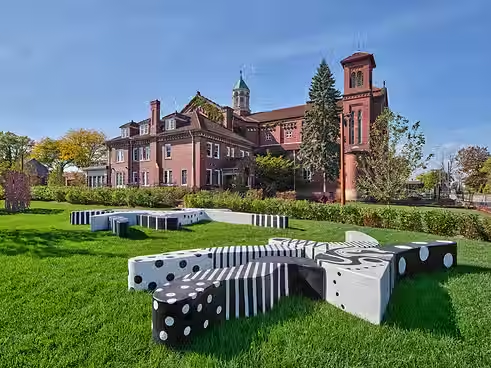
EAST VILLAGE
East Village Detroit is an up-and-coming neighborhood that offers a unique blend of historic charm and modern potential. Situated just east of the city's core, it is known for its vintage homes, many of which feature classic Detroit architecture, including Queen Anne and colonial revival styles. The area has long been home to a tight-knit community, and in recent years it's been experiencing a renaissance with new development and investment in both residential and commercial spaces.
East Village is increasingly becoming a hub for artists, entrepreneurs, and young professionals drawn to its affordability and proximity to Downtown Detroit. The neighborhood Is also known for its growing cultural scene, including local art galleries, music venues, and a variety of eateries, making it a dynamic and vibrant place to live. With its blend of historic architecture, creative energy, and community spirit, East Village is quickly establishing itself as one of Detroit's most promising and desirable neighborhoods.

EARLY DEVELOPMENT
In the early development days of east Village, the area grew rapidly as the city expanded during the 19th Century. Originally part of the City's eastern edge, East Village benefited from its proximity to the Detroit Rier, which served as a vital transportation route for goods and people. As Detroit transformed from a small settlement into a burgeoning industrial hub, the neighborhood attracted a diverse mix of German, Irish, and later Polish and Eastern European immigrants/ These working-class communities settlerd in the East Village, seeking proximity to the factories and skipyards along the river front. The area quickly became a residential enclave, characterized by modest, victorian-style homes, row houses, and small cottages, reflecting the city's architectural growth during the era.
East Village also emerged as a key site for the city's early industrial workforce. While it wasn't as heavily industrialized as other parts of Detroit, the neighborhoods residents worked in the nearby factories, docks, and businwess that supported the growing manufacturing economy. By the mid-1800s, the development of key infrastructure, including Jefferson Ave as a major thoroughfare, further connected East Village to the heart of Detroit and neighboring areas. Local churches, schools, and social clubs played an important role in shaping the community, providing both spiritual and social support to the immigrants and working-class families who called the area home. During this early period, EV establised itself as a vibrant, diverse, and industrious part of Detorits larger urban and cultural growthe


DECLINE
By the mid-20th century, East Village began to decline, mirroring the broader challenges faced by Detroit. The migration to the suburbs, combined with the deindustrialization of the city, led to a loss of jobs and residents. This, in turn, resulted in the deterioration of many properties, with many homeowners abandoning the area and businesses closing. By the 1960s and 1970s, East Village, like much of Detroit, suffered from urban decay, rising crime rates, and population loss. The neighborhood, once vibrant and thriving, became a shadow of its former self.
RECENT YEARS
In recent years, however, East Village has seen a resurgence. As part of Detroit's broader revitalization, the area has attracted new investment, including the restoration of historic homes and the opening of small businesses and cultural spaces. Artists, young professionals, and community organizations have been central to the neighborhood's renewal, helping to revitalize its streets, foster creative projects, and restore a sense of community. The area's proximity to downtown and its relatively affordable housing have also made it increasingly desireable. Today, East Village is a neighborhood in transition - preserving its historic charm while embracing a new wave of development, making it one of the most promising and dynamic areas in Detroit.

